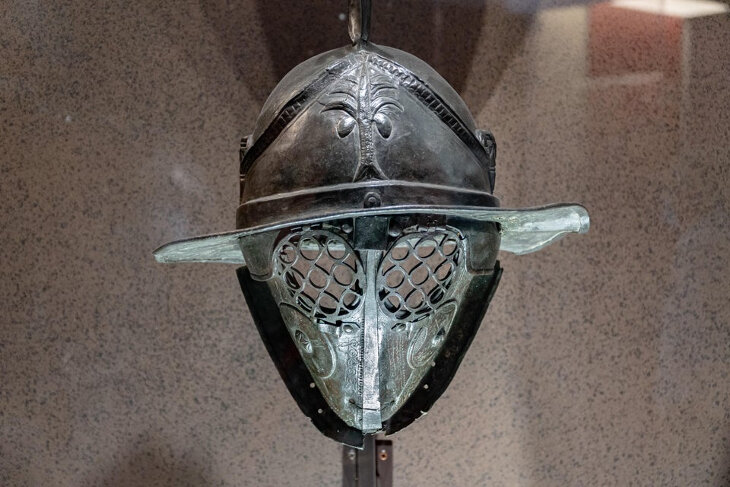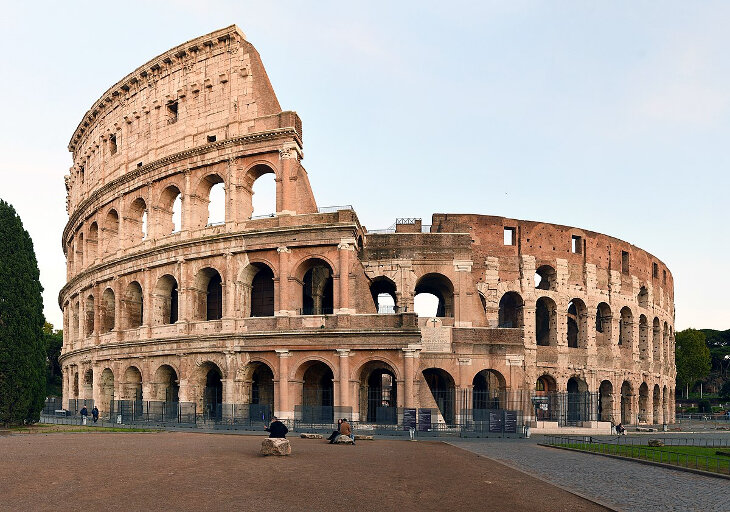 Passover’s Message of Hope in the Aftermath of Oct. 7
Passover’s Message of Hope in the Aftermath of Oct. 7


6 min read
Imagine the choices and consequences that starving slave had to face.
On a recent visit to Rome, I took a tour of the Colosseum, led by an accomplished archeologist whose doctoral research had centered on Jewish life in early Rome. I learned that contrary to the Hollywood images, the men who fought in that ancient battle ring were not the burly warriors of the movies but were instead scrawny slaves whose efforts to survive were family entertainment.
My tour guide explained that the ferocious animals used in the fights were starved for days in the hope of making them voracious and more violent. The slaves, meanwhile, were fed barley to fatten and extend their bellies so that the animal fangs (or sword thrusts of the actual Roman warriors) would take longer to penetrate into their inner organs, causing more blood and more gore to the delight of parents and children in the grandstands.
Typically, the slaves lost, mauled and eaten, or stabbed and beaten. Those few agile slaves who somehow managed to survive and to vanquish their attackers with a lucky knife wound would be allowed to fight again. If they continued to survive, they were eventually awarded some level of emancipation and could live among the Roman citizens as virtually free men.
While my companions chattered about this gruesome history, I reflected to myself on how Jewish law forbade attending these fights, viewing the Roman “circuses and theatres” as pagan practices. Fights of any kind, especially bloodsport fights for entertainment, have never been the Jewish way.
I recalled how the Talmud reports how the Roman conquerors of Israel took boatloads of Jewish young men and young women off to Rome as captive slaves, into lives of degradation. I imagined the fright and the horror of those young people as they were herded into Rome, a metropolis with practices and customs so foreign to life in the Holy Land. How lost they must have felt in that alien lifestyle.
Jewish slaves in Rome had to wear a palm tree symbol to publicize that the Romans had conquered their homeland and had taken its people into captivity.
The tour guide interrupted my reverie. “Our archeological research has found evidence of a Jewish gladiator.”
All of us on the tour listened. “You all know that the Germans required Jews to wear a yellow star to identify them as Jews. Throughout the Middle Ages, various countries did similar things. Jews had to wear unusual hats, or colored items and the like. In ancient Rome, the palm tree was a symbol of the land now known as Israel. Palm trees were not abundant in Italy but are found in the Middle East. Jewish slaves in Rome had to wear a palm tree symbol to publicize that the Romans had conquered their homeland and had taken its people into captivity. In Pompeii we found the home of what had been a male gladiator. His helmet and cloak bore the palm tree symbol, identifying him as Jewish. He had survived his fights, obviously, and had been allowed to settle among the citizens in Pompeii.
 Ancient helmet from Pompeii with palm tree may have belonged to a Jewish gladiator
Ancient helmet from Pompeii with palm tree may have belonged to a Jewish gladiator
“So far, this is the only evidence we have found that there was once a Jewish gladiator who was victorious. We surmise that there were other Jewish slaves forced to fatten up and fight, but who lost their lives.”
A Jewish gladiator. What choices had that starving slave faced? To refuse to enter the ring meant being slaughtered by his captors. To enter but then remain passive as the warrior approached him or the beast roared at him would mean sacrificing his life to the cheers of thousands of spectators. To kill in order to save himself would be preserving a Jewish principle requiring that we take the life of someone attempting to take our own life. That Jewish slave fought, or fought back, and won. But that meant having to fight again.
Somehow, the months must have passed and this became his career. He was the victor in fight upon fight. He was probably known as the Jewish gladiator, and people began to cheer for him as he entered the ring. He succeeded at each bout and with time, I mused, he adopted the identity of a warrior, so different than he had been raised.
 The Roman Colosseum
The Roman Colosseum
Did he remain a Jew? Clearly he did, because he had to retain the garb marking him as one. But what became of his soul? What became of his self-image? Was this truly a fight to the finish – finishing off his Jewish character?
My thoughts turned to Hanukkah of old, the pious Hasmonean priests who were forced to become a fighting force against an enemy set on destroying their Judaism and their rights to a sanctified life. Eventually they were vanquished by the Romans, initially at the hands of a general named Pompey. They did not survive. Many assimilated. The Hasmoneans no longer exist and we do not glorify their mundane acts so much as we focus on the sanctity and sacred consequences of that era.
The Festival of Hanukkah has lived on, as has the Jewish people and what has endured is the spiritual commemoration of that saga, through lighting the menorah and giving thanks and singing praise to God for saving His people. We do not ritualize the warfare or their physical might. We light candles and chant psalms of thanksgiving.
The Jewish people, post-Holocaust, has heard the cry of “Never Again!” and some have questioned and explored the role of militant might in protecting our lives, our rights and our identities. Our patriarch Yitzchak blessed his Jewish descendants with the power of “voice” – which we utilize in our praying and in our Torah study. He left the power of physical might to his son Esav and those descendants. Our challenge throughout our long history in exile has been balancing our identity as the nation whose power is in its Voice of praying and Torah study, with the pressures – and at times necessity – to take an aggressive stance to defend and to protect ourselves.
Holding on to our authentic identity is a challenge. Do Jews continue to view themselves as a spiritual people, governed by their Jewish values and devotion to live a moral life, or have we muted that sacred voice, having grown more comfortable with our forays into the material and the mundane, blurring the lines between the spiritual Voice of Jacob and the physical Hands of Esav? Are we victorious gladiators, or are we Jews committed to our faith and our mission to be a light unto the nations?
The Hasmonean warriors are long gone, but Hanukkah lives on, and so will the Jewish people. The spiritual Voice of our nation remains our mightiest power. This is how the Jewish people will endure.
A version of this article originally appeared in Jewish Life.
